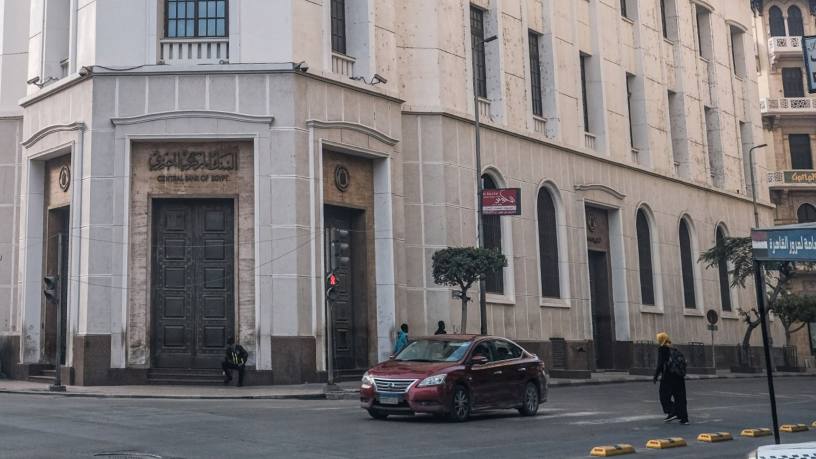Egyptian lenders have been at the forefront of the country’s remarkable economic growth over the past five years. The country’s banks — especially state-owned giants National Bank of Egypt and Banque Misr — have been among the fastest-growing lenders in Africa in recent years, maintaining significant asset growth even amid warnings of the fragility of Egypt’s economic model.
This fragility was exposed in early 2022, with the war in Ukraine prompting an exodus of more than $20bn worth of portfolio investment from the country in a matter of months, resulting in import backlogs, soaring inflation and a 50% slump in the Egyptian pound. The country has returned to the International Monetary Fund (IMF) for the fourth time in seven years and has also sought relief funds from Arabian Gulf allies including Saudi Arabia and the UAE.
Despite such challenges, the country’s banking sector remains on a stable footing, even if short-term asset growth is set to be more muted.
Banks continue to benefit from the overhaul of the sector that began with the Unified Banking Law of 2003, initiating a process that included the recapitalisation of state-owned banks, a clean-up of legacy non-performing loans, the transformation of the Central Bank of Egypt (CBE) into an independent body, and the introduction of more effective supervision and regulations.
Such measures have set the sector in good stead during the country’s last economic crisis of 2016 and throughout the early Covid-19 crisis.
“Egyptian banks have very high capital adequacy levels and provisioning coverage, with most of the larger players either government-owned, or a subsidiary of a major international lender,” says Hussein Abaza, CEO of Commercial International Bank (CIB), the country’s third-largest lender by assets.
“The CBE has been very proactive over the years in working with banks to adopt international standards and provisioning levels are adequately high.”
Healthy internal capital generation means that banks’ regulatory capital ratios will be able to withstand any further depreciation of the Egyptian pound, according to Fitch Ratings.
Capital equity tier 1 (CET1) ratios for the sector as a whole remain stable at 11.6% as of end-September, well ahead of the CBE’s required minimum of 4.5%. Fitch Ratings notes that National Bank of Egypt and Banque Misr — which together account for about two-thirds of the country’s total banking assets — have the weakest CET1 ratios, but are set to remain above the 4.5% minimum requirement set by the CBE, even without factoring in subsequent profits.
Challenges ahead
Now, 12 months on from the outflows of hard currency sparked by the Ukraine crisis, foreign currency liquidity remains one of the key challenges facing both the sector and the economy. While the backlog of goods stuck in Egyptian ports — exacerbated by a demand in February 2022 by the CBE that imports be funded by letters of credit instead of cash-against-documents — has eased since the start of the year, around $4bn worth of goods remain stuck in ports as of early March, according to Citigroup.
Such shortages — which have seen banks imposing restrictions on foreign currency withdrawals — make further devaluations of the Egyptian pound highly likely.
Bloomberg reported in early March that the local derivatives market is pricing in a further slide in the valuation of the Egyptian pound, with one- and 12-month contracts on the currency in the non-deliverable forwards market posting 10 consecutive weeks of losses.
Yet the market remains highly liquid in terms of local currency, with a loan-to-deposit ratio of 45.5% for the sector, with large volumes of Egyptian pounds held outside the main banking system.
CIB’s Mr Abaza notes that one-year certificates of deposit issued in January by the National Bank of Egypt and Banque Misr (which offered a record 25% yield) attracted E£460bn ($15bn) worth of orders, with billions’ worth placed outside banking working hours.
“This demonstrates that there is plenty of liquidity in the economy, with much of it outside the banking system,” he says.
Having already raised interest rates to their highest level since 2019 and with inflation breaching the 30% mark in February, the CBE is widely predicted to raise rates further at its next rate-setting meeting in late March, in a move set to support banks’ profitability.
“As was the case during the challenging year of 2016, banks are benefitting from the higher interest rate environment, given the high levels of [local currency] liquidity in the system,” says Monsef Morsy, co-head of research at CI Capital in Cairo.
“In that higher rate environment, banks felt the benefit in terms of higher margins and profitability, and we think it will be broadly the same situation this time around as well.”
Achieving growth
While profitability is set to be supported, asset growth in the coming period is likely to remain subdued, especially in the private sector.
“The challenge over the coming period is going to be asset growth in a high-inflation, high-interest rate environment with very low purchasing power,” says Mohamed Abdel Kader, country head for Citi in Egypt.
“With the higher interest rates, you can imagine a growth in deposits, but there’ll be very little appetite for borrowing in the short term, unless the privatisation cycle happens very quickly.”
Higher interest income, together with relatively strong credit growth, will help banks mitigate profitability challenges stemming from elevated provisioning charges and funding and operational costs, according to Moody’s Rating Service.
Credit growth is set to slow to 10–13% for 2023, CI Capital predicts, with investment in government treasuries and the interbank market.
There is a strong demand for working credit, as is to be expected in the current inflationary environment
CIB, which is more focused on the private sector, is targeting credit growth of 20% and deposit growth of 15% for 2023, says Mr Abaza.
“There is a strong demand for working credit, as is to be expected in the current inflationary environment. There’s also strong demand within the tourism sector as hotels and resorts see increased demand after the lull during Covid.”
With inflation set to hit an all-time high in March, non-performing loans (NPLs) are set to deteriorate, but will remain manageable, says CI Capital’s Mr Morsy.
“NPLs didn’t spike significantly during the last crisis,” he said. “There will be an increase, but we expect it to be quite modest, with the government stepping in to provide assistance to specific sectors that are under pressure. Meanwhile, overall provisioning is more than sufficient to cover any increase.”
Citi’s Mr Abdel Kader noted that small and medium-sized enterprises (SMEs) are the most vulnerable in the short term, with Egyptian lenders having significantly increased loans to the segment in the run up to the crisis, following a 2016 CBE mandate that obliged banks to dedicate 20% of their loan portfolios to SMEs.
In December, the government extended initiatives to support loans to tourism companies and workers in the sector until the end of March, and announced a five-year subsidised loan programme for industrial and agricultural projects in January.
Moody’s forecasts that the NPL ratio “is not expected to increase materially” from its current level of 3.2% for the sector.
Perfect storm
One of the casualties of the current economic crisis was the CBE’s long-standing governor Tarek Amer, who abruptly submitted his resignation in mid-August, ahead of the expiry of his term in 2023.
In place since 2015 and widely praised for his stewardship of the banking sector through the crisis of 2016 and into the years of dramatic growth that followed, Mr Amer — who was appointed as an advisor to the president — has faced criticism for his handling of the economy in the immediate run up to the current crisis.
“When the Fed began raising rates, money began flowing out of the country with the exchange rate being fixed at an artificially high rate,” says a senior banking figure in Egypt who asked not to be named.
The letters of credit move for imports in February 2022 then created the perfect storm.
Hassan Abdalla, a former vice-chairman of Arab African International Bank (AAIB), was appointed as acting CBE governor the day after Mr Amer’s departure.
“The new governor has a strong markets background and that has played out in the more flexible approach to the foreign exchange markets since he assumed the role,” says CI Capital’s Mr Morsy. “He’s doing what needs to be done.”
Banks are at the heart of the latest privatisation drive announced by the government in line with its latest $3bn loan agreement with the IMF. Banque du Caire, AAIB and United Bank of Egypt — all of which had previously been slated for privatisation — were among the 32 firms listed for stake sales in February.
After talks between Saudi Arabia’s Public Investment Fund and United Bank of Egypt collapsed in February over valuation differences, the CBE has sent investment banks a request for proposals to pitch for an advisory role in the sale of the lender, according to Reuters.
Beyond the three banks listed in February, Reuters reported that the CBE may also be looking to offload a stake in Housing and Development Bank, in which the government holds a 59.5% stake.
Meanwhile, Reuters reports that a ruling is expected in March regarding the government’s 20% stake in AlexBank, which it is also looking to offload. The state sold 80% of the lender in 2006 to Sanpaolo IMI, which has subsequently merged with Banca Intesa to create Intesa Sanpaolo.
The sale of the remaining 20% had been blocked by a legal challenge by local activities, but the government passed a law preventing any party other than those involved in a transaction from challenging sales or investment contracts signed by the state. After a final challenge to the law was rejected by Egypt’s constitutional court in January, a rule on the prospective sale of the shares is expected to be heard by the end of March.
Intesa Sanpaolo and the CBE did not respond to a request for comment.
Ahead of the formal launch of the privatisation in February, the economic crisis has already prompted further investment in the sector. As part of $1.85bn worth of investments across a series of companies announced, Abu Dhabi state holding firm acquired a 17% stake in CIB for $910m, the largest merger and acquisition transaction in the financial services space in Africa of the past year.
The fund joins a crowded field of Gulf banks in Egypt, including First Abu Dhabi Bank, Qatar National Bank, Abu Dhabi Islamic Bank and Emirates NBD to name but a few.
ADQ also acquired a 12.6% stake in electronic payments provider Fawry for $69m, the second-largest fintech deal in Africa for the year. The attractiveness of the sector to Gulf investors was underscored by the $400m worth of funding raised by fellow Egyptian fintech MNT-Halan in February 2023, led by Chimera Abu Dhabi.
The deal will see Chimera — part of Abu Dhabi’s Royal Group, controlled by the UAE’s national security adviser and billionaire businessman Sheikh Tahnoon bin Zayed al-Nahyan — take a 20% stake in the company for $200m.













